
Something electric about discovering a place before it becomes everyone’s next Instagram obsession. It’s the rush of untamed coastlines, whispering forests, and secret shorelines that seem made just for you.
These islands don’t exist on well‑worn travel maps—they’re the whispered treasures you uncover when nobody’s looking. As you turn each page, you’ll feel the salty breeze, hear the soft rustle of trees, and taste freedom in every wave.
So get ready—this isn’t just a list; it’s an invitation to chase silence, solitude, and wonder at fourteen breathtaking secrets still waiting to be found.
1. Cumberland Island, Georgia
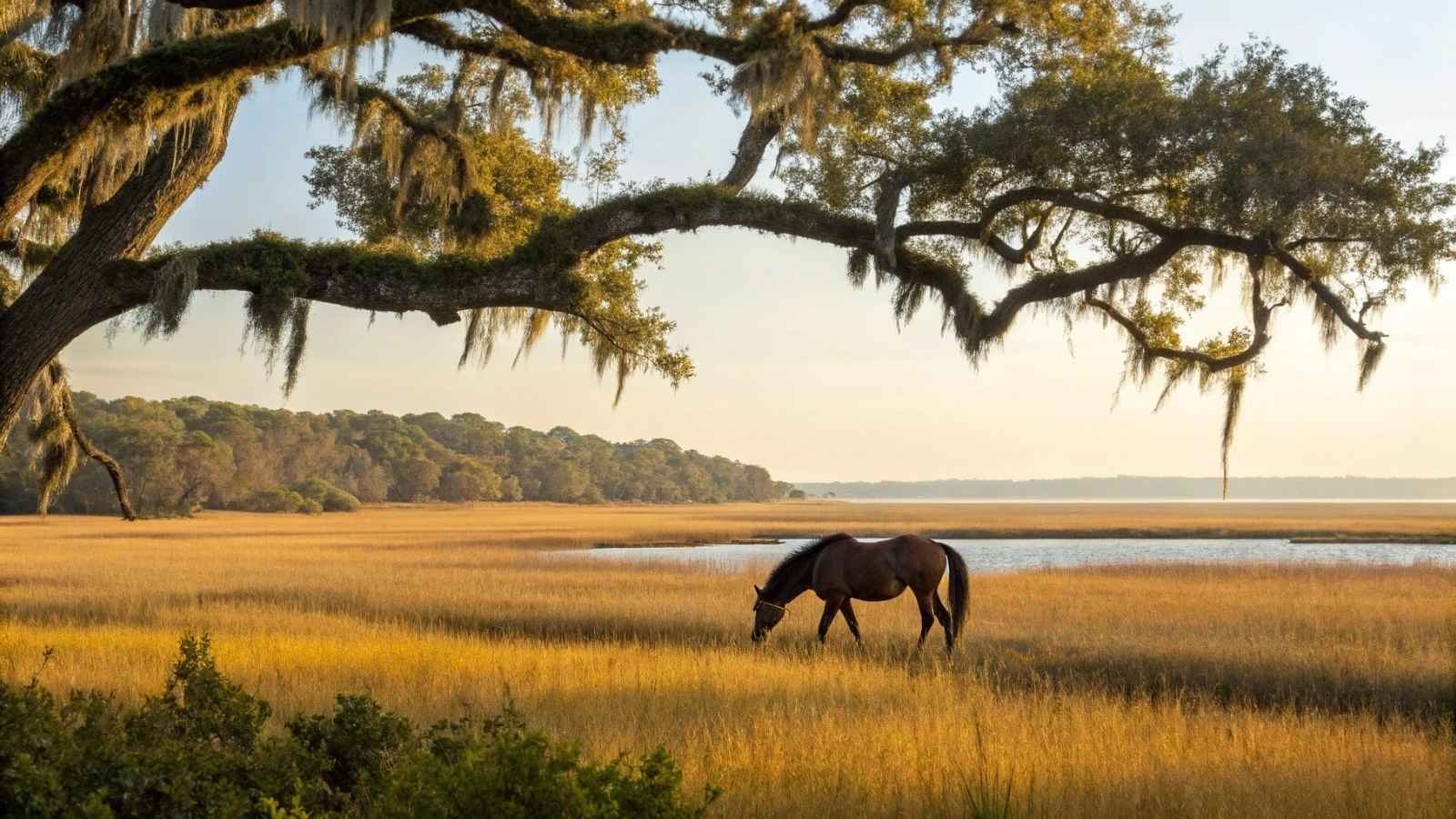
Cumberland Island is one of those rare places where time seems to stop. Tucked away off the Georgia coast, this wild and hauntingly beautiful island is protected by the National Park Service, which means no chain restaurants, no souvenir shops — just you and nature. Once the playground of the Carnegie family, today it’s a quiet haven of windswept dunes, moss-draped oaks, and untamed beaches.
What sets Cumberland apart is the feeling of isolation and discovery. As you hike through the dense maritime forest or bike along sandy trails, you’ll likely come across the island’s most famous residents — wild horses. Nobody knows exactly how they got there, but they’ve made the island their home for generations. And if you’re lucky enough to catch sunrise on the beach with the horses silhouetted in the distance? Unforgettable.
You won’t find fancy hotels here — the only overnight option is camping or the luxurious but low-key Greyfield Inn. But honestly, that’s part of the magic. You’re not just visiting an island; you’re stepping into a pocket of the past where nature is in charge, and that’s something worth experiencing before the secret’s out.
Travel Info & Tips:
- Best months to visit: March to May and September to early November (mild weather, fewer bugs)
- How to get there: Ferry from St. Marys, Georgia (reservations required)
- Where to stay: Campgrounds (primitive) or Greyfield Inn
- Must-do activities: Explore Dungeness Ruins, watch wild horses, walk the 17-mile beach, and stargaze at night
- Good to know: No cars allowed, pack everything you need for the day — limited facilities
2. Tangier Island, Virginia

Tangier Island feels like it belongs in another country — or another century. Floating in the middle of the Chesapeake Bay, this sleepy fishing island is home to a tight-knit community of just a few hundred people who still speak in a unique 17th-century English dialect. It’s not just a trip — it’s a cultural time capsule.
This island is famous for its Chesapeake Bay blue crabs, and the economy still revolves around the water. As you walk or bike the narrow lanes, it’s not unusual to see crab pots stacked beside tiny cottages or to hear the hum of watermen heading out before dawn. The simplicity of life here is refreshing, especially in a world that rarely slows down.
There are no flashy resorts or big attractions. Instead, you’ll find a quiet, deeply authentic place where locals wave at visitors, kids ride bikes barefoot, and seafood is about as fresh as it gets. But go soon — rising sea levels are threatening the island’s very existence, and this incredible piece of living history may not always be here.
Travel Info & Tips:
- Best months to visit: May to October (warmer temps, crab season)
- How to get there: Passenger ferry from Crisfield, Maryland or Onancock, Virginia
- Where to stay: Tangier Island Bed & Breakfasts (quaint and homey)
- Must-do activities: Eat crab cakes, visit the Tangier History Museum, rent a golf cart or bike
- Good to know: No cars — everything is walkable or bikeable, very limited cell service
3. Dry Tortugas, Florida

If you’ve ever wanted to feel like you’re standing at the edge of the world, Dry Tortugas delivers. Located 70 miles west of Key West, this group of small islands is accessible only by seaplane or ferry — and that’s part of what makes it feel so untouched. It’s also home to Fort Jefferson, a massive 19th-century coastal fortress that looks like it was dropped right into the middle of the ocean.
But it’s not just history buffs who fall for this place. The surrounding aqua-blue waters are among the clearest in Florida, making it a paradise for snorkeling, diving, and underwater photography. Sea turtles, coral reefs, and vibrant tropical fish make this marine sanctuary come alive beneath the surface.
There’s no lodging here unless you camp, which means once the last ferry leaves, you’re one of only a handful of people left on the island. That kind of solitude — under a sky so full of stars it feels unreal — is a rare luxury. Dry Tortugas isn’t easy to get to, but that’s exactly why it’s stayed so special.
Travel Info & Tips:
- Best months to visit: November to April (less humidity and calmer seas)
- How to get there: Ferry or seaplane from Key West (book well in advance)
- Where to stay: Primitive camping (must bring all gear) or stay in Key West
- Must-do activities: Snorkeling around Fort Jefferson, touring the fort, birdwatching, night photography
- Good to know: No fresh water available — bring your own, very strict on permits for campers
4. Sucia Island, Washington
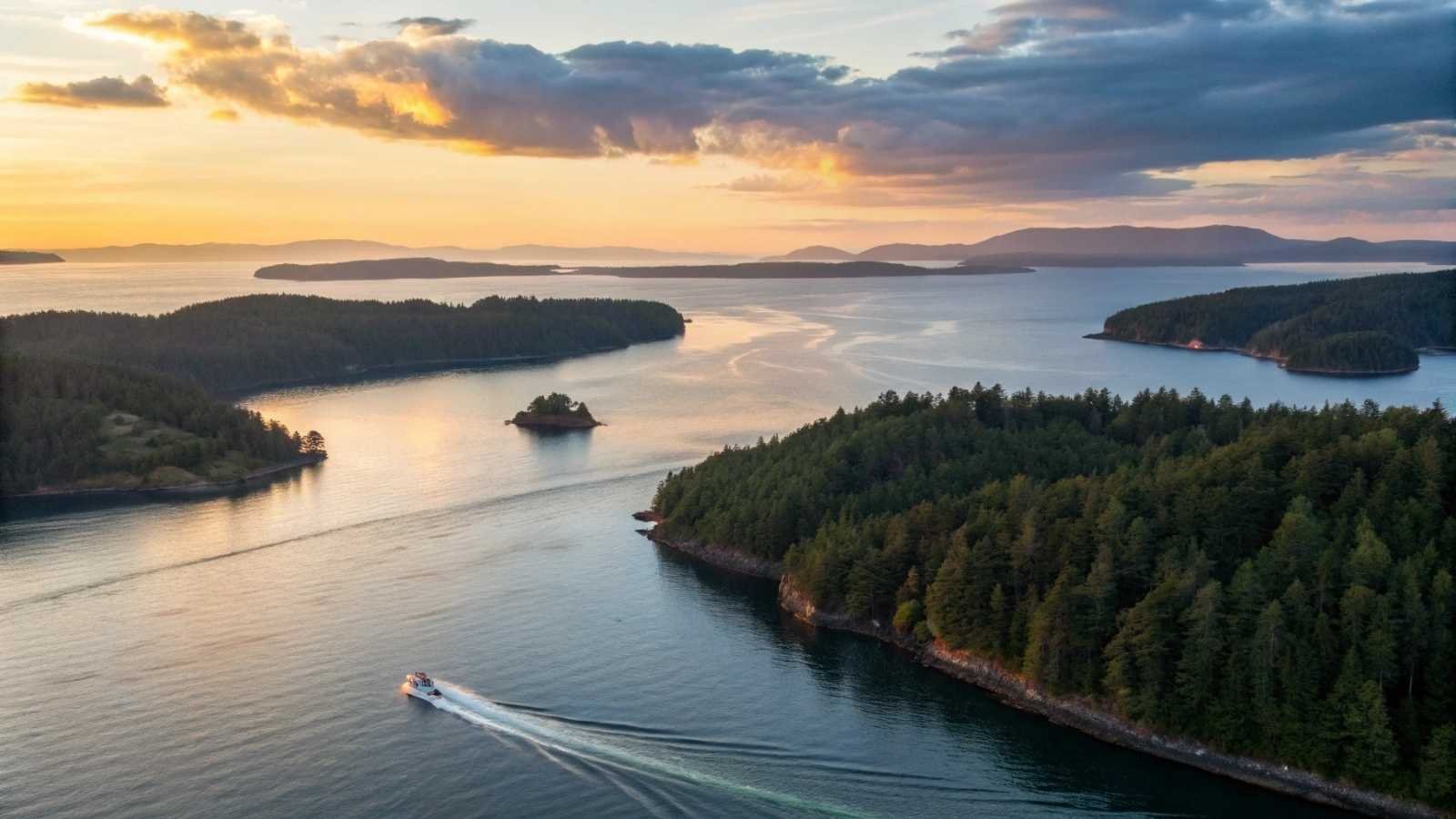
Part of the San Juan Islands, Sucia is a state marine park that looks like something out of a watercolor painting. Only accessible by private boat or charter, the island remains wild, peaceful, and completely free of cars or commercialization. It’s just you, forest trails, quiet coves, and the occasional curious seal popping its head above the water.
What makes Sucia Island so special is its geological beauty. You’ll find sandstone cliffs, fossil beds, and weird rock formations that look like they belong on another planet. There are plenty of hidden beaches and protected bays, perfect for kayaking or paddleboarding. Plus, the hiking trails are gentle and scenic — ideal for families or laid-back explorers.
At night, when the stars come out and the only sounds are waves and the occasional hoot of an owl, you’ll feel like the world’s been put on pause. Whether you come for a day or spend the night at one of the primitive campsites, Sucia is the kind of secret you’ll want to keep to yourself.
Travel Info & Tips:
- Best months to visit: June through September (dry and sunny)
- How to get there: Private boat, water taxi, or kayak from Orcas Island
- Where to stay: Primitive camping only (no reservations, first-come basis)
- Must-do activities: Fossil hunting, kayaking the inlets, watching marine life
- Good to know: No services or shops — bring all supplies, great for stargazing
5. Daufuskie Island, South Carolina
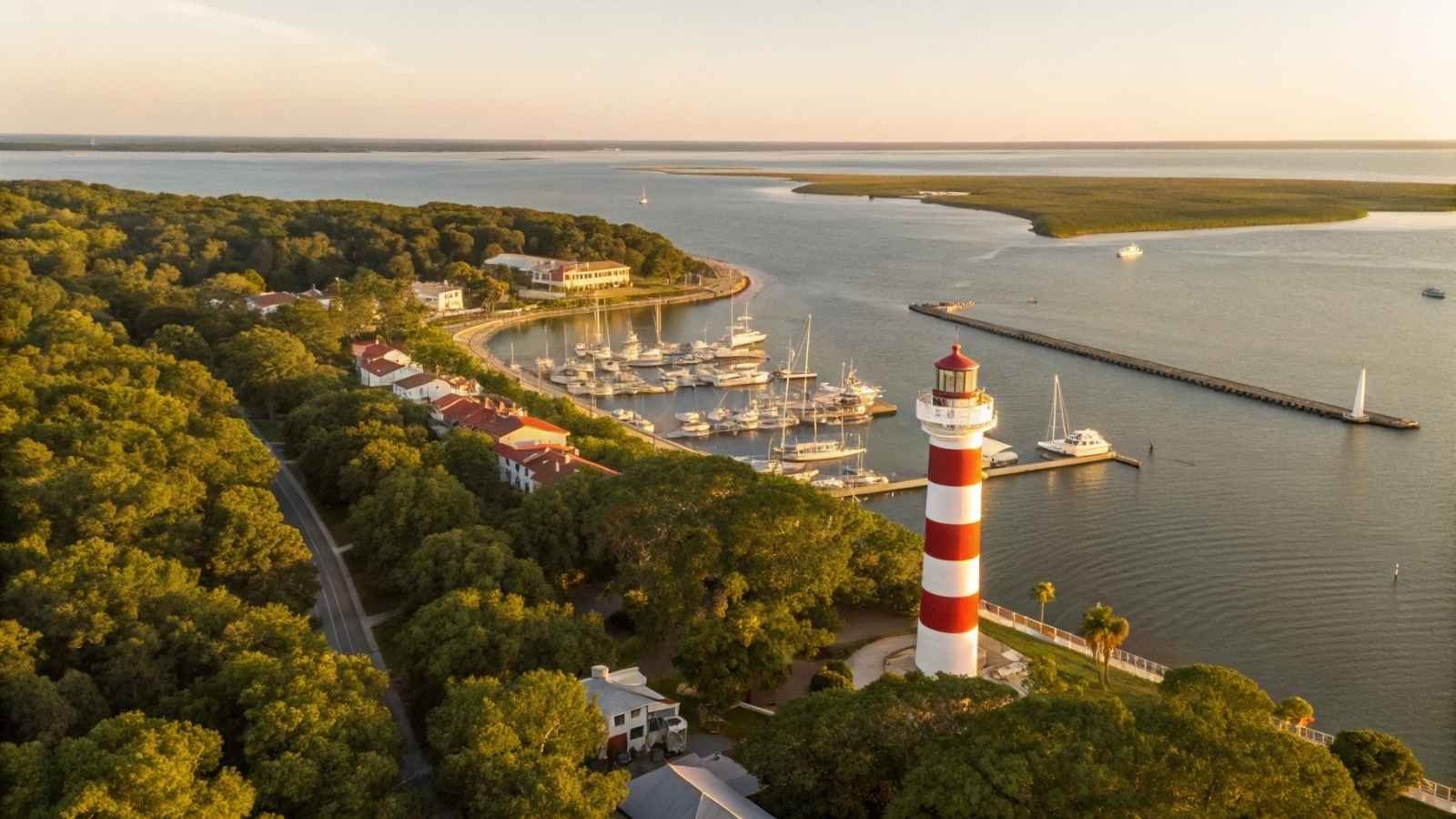
Daufuskie Island is just off the coast of Hilton Head, but it feels a world away — no bridges, no rush, just a slice of southern island life that’s still largely untouched by development. This hidden gem offers a deep dive into Gullah-Geechee culture, unpaved roads shaded by Spanish moss, and art galleries tucked inside historic buildings.
Locals get around by golf cart, and visitors quickly adjust to the slow pace. The beaches are gloriously empty, and the sunsets feel cinematic. There’s a fascinating mix here — old church ruins, a working rum distillery, and rustic homes that whisper of generations past. It’s an island that wears its stories proudly.
Daufuskie doesn’t try to impress with flash. It wins hearts with quiet charm, cultural depth, and the kind of back-to-basics escape that sticks with you long after you’ve left. If you’re craving a break from the modern world, this is your place.
Travel Info & Tips:
- Best months to visit: April to June and September to early November
- How to get there: Ferry or private water taxi from Hilton Head or Bluffton
- Where to stay: Vacation rentals or small inns like the Daufuskie Island Guest House
- Must-do activities: Explore by golf cart, visit local artists, relax on Bloody Point Beach
- Good to know: No grocery stores — bring snacks and essentials, limited cell service, culturally rich experience
6. Sapelo Island, Georgia

Sapelo Island is a serene barrier island rich with both natural beauty and deep cultural history. Around 97% of the island is owned by Georgia’s state government and is home to the historic Gullah‑Geechee community in Hog Hammock—descendants of enslaved Africans who have maintained their heritage for over two centuries.
Exploring Sapelo is like stepping into a living museum—a moss-draped mansion built by tobacco heir R.J. Reynolds, ancient shell rings, slave-plantation ruins, and a brick lighthouse from 1820. Most of the island remains undeveloped, meaning you’ll wander unspoiled beaches, tidal creeks, and pine forests
Travel is carefully controlled to preserve the island’s character. You’ll need a permit or go on a guided tour. Once on board, you’ll feel the quiet hum of history, see wild cattle, nesting sea turtles, and the peaceful library & country store in Hog Hammock.
Practical Info & Tips:
- Best months: May–October (good shelling, sea turtle nesting).
- Access: Ferry from Meridian Dock near Darien, GA; permit required.
- Stays: Group-only stays in Reynolds Mansion or small campsites.
- Do not miss: Tour Reynolds Mansion, Nanny Goat Beach, Shell Ring, and Behavior Cemetery.
- Worth knowing: Limited services—plan with supplies; preserve local culture.
7. Santa Rosa Island, Florida

Santa Rosa Island (part of Florida’s Gulf Coast) stretches along the Panhandle barrier chain and remains remarkably undeveloped aside from small parks and occasional wildlife preserves. It’s 40 miles of crescent, pristine white sand beaches that feel like your private slice of paradise.
Wildlife here is abundant: sea turtles nest on the beaches, shorebirds roost in protected dunes, and dolphins surf offshore. Nearby are the historic forts of Pensacola, though much of the island itself is largely undeveloped, perfect for kayaking through hidden marsh creeks or biking sprawling trails.
Camping is popular at places like Fort Pickens or Johnson Beach, where you wake up to sunrises over the gulf and fall asleep under moonlit dunes. With only light amenities and a strong conservation ethic, Santa Rosa is a quiet retreat you’ll want to enjoy before word (and crowds) spread.
Travel Info & Tips:
- Best months: April–June and September–November (mild weather, fewer bugs).
- Access: Bridge via Pensacola Beach or ferry to campsites.
- Stays: Campgrounds at Fort Pickens, Johnson Beach; limited cabins.
- Must-do: Snorkel near old fort remains, bike dunes, watch turtle nesting (June–Oct).
- Heads‑up: No restaurants—pack food and sunscreen; some areas are restricted for wildlife protection.
8. Whidbey Island, Washington
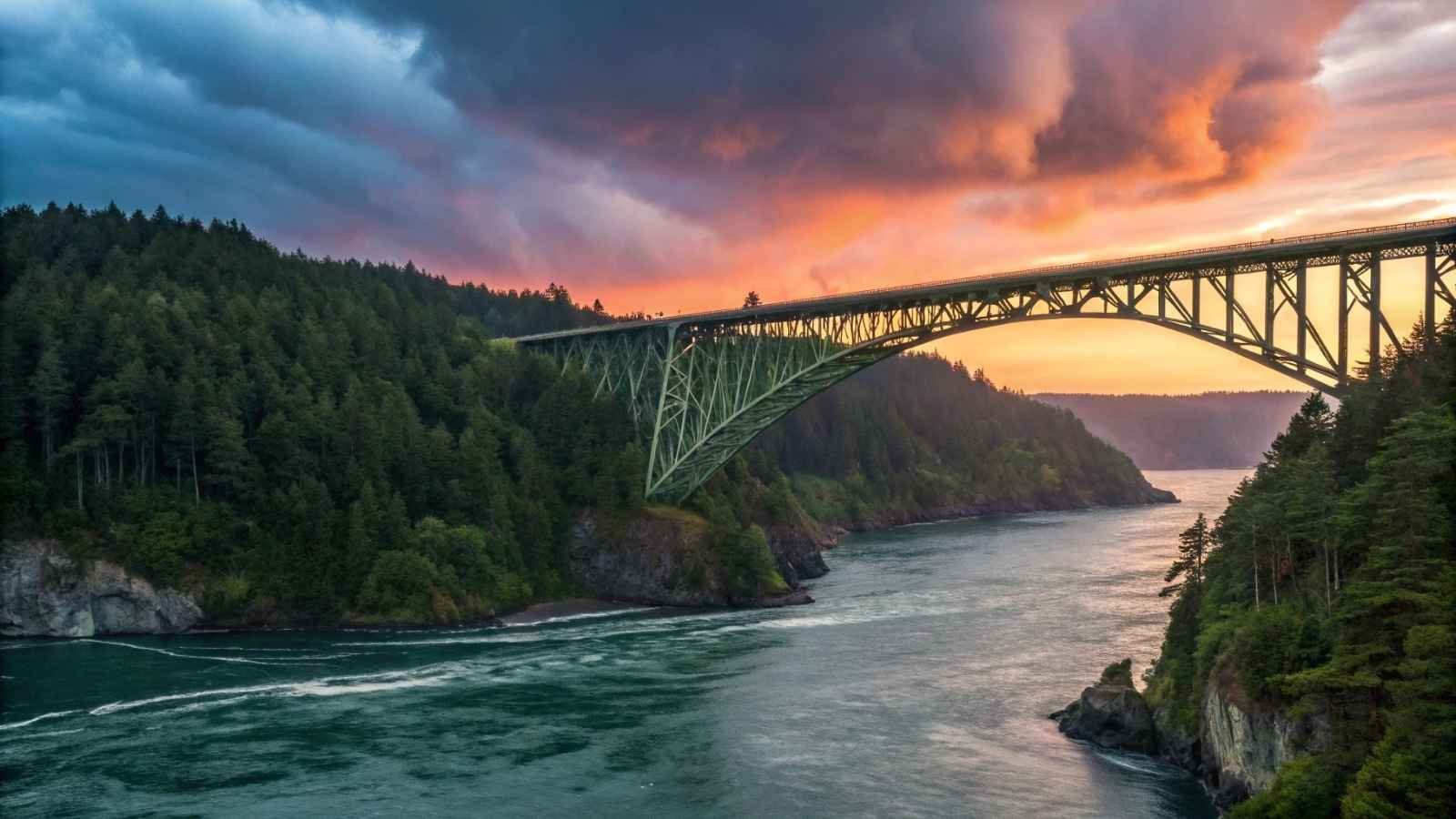
Just north of Seattle, Whidbey Island offers a surprising dose of remote this-meets-that charm—wind-swept woods, rolling farmland, and striking Deception Pass cliffs. Despite its growth, the island remains under‑visited compared to the San Juan Islands.
Deception Pass State Park is a showstopper: twin bridges span a roaring tidal channel, rainbow-colored waters crash over rocks, and forested trails offer dramatic vistas. For something more secluded, the island’s south end is dotted with small communities, secret beaches, and farm-to-table cafés.
Stay in cozy cabins or seaside inns and rent kayaks or e-bikes to explore coves, pick berries, or stop at art galleries along the way. Locals will tell you: it’s easy to fall in love here, and harder to want to leave.
Travel Info & Tips:
- Best months: June–September (sunny and warmest).
- Access: State Ferries from Mukilteo, or drive across the Deception Pass bridge.
- Stays: B&Bs, cabins, campsites; vacation rentals in Langley & Greenbank.
- Don’t miss: Hike trails at Deception Pass, Ebey’s Landing bluff, and Fort Casey lighthouse.
- Note: Some ferry waits in summer—arrive early; bring your camera.
9. Apostle Islands, Wisconsin
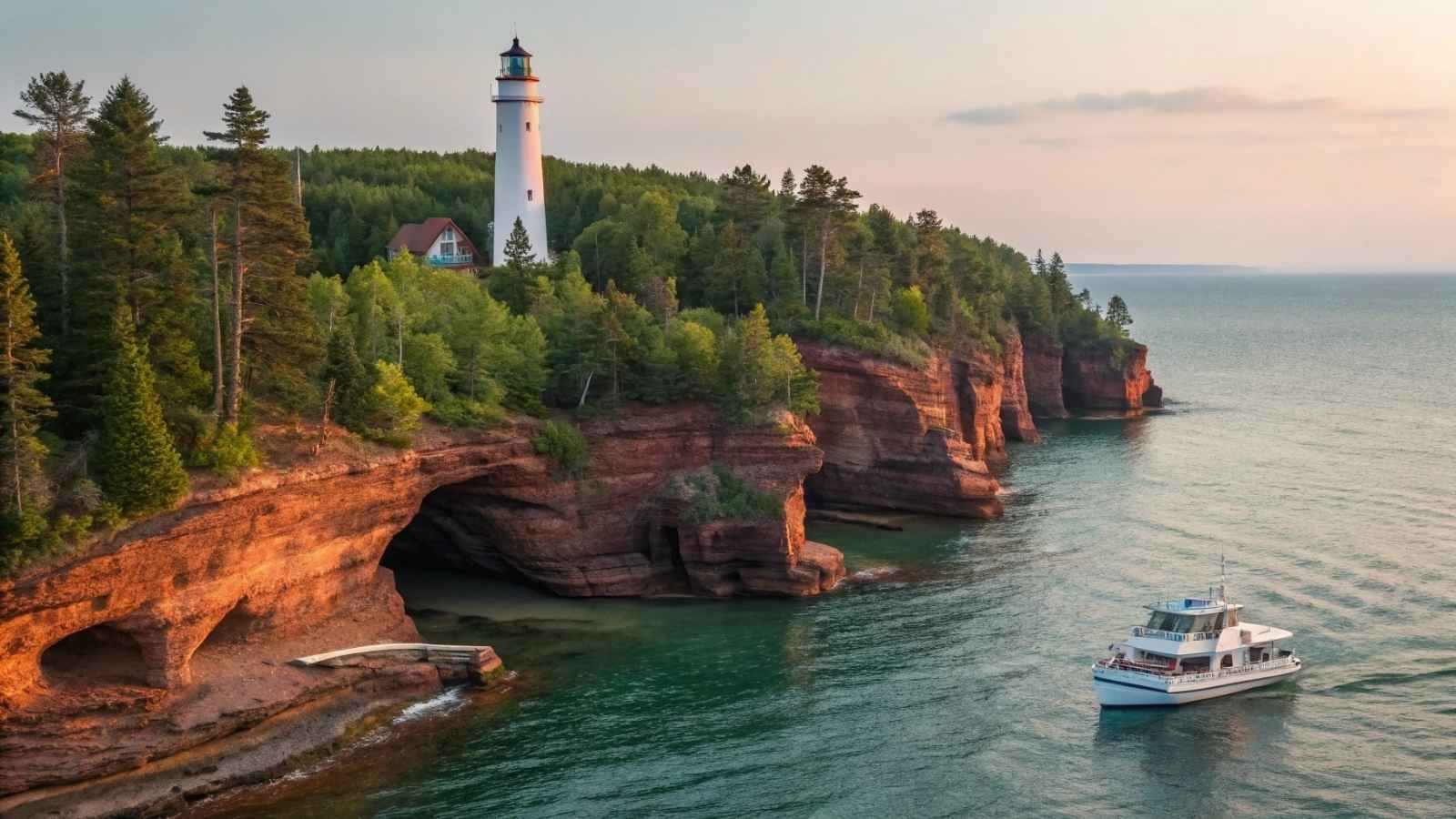
The Apostle Islands in Lake Superior are a labyrinth of 22 islands featuring sandstone sea caves, old-growth forests, and historic lighthouses—many accessible only by boat or kayak. Ice caves emerge in winter—worth the trek for a frozen fairy‑tale experience.
The islands are within a National Lakeshore, so primitive camping, guided kayak trips, and cruise tours are the best ways to experience them. You’ll paddle through cobalt-blue water tunnels, scramble on wave-worn sea stacks, and wander among lighthouses perched on windswept cliffs.
With far fewer visitors than coastal national parks, the Apostle Islands feel vastly wild and still, a special treat for nature lovers and adventure seekers seeking off‑the‑grid beauty.
Travel Info & Tips:
- Best months: June–September (cave tours and kayaking); winter (Feb‑Mar) for ice caves.
- Access: Boat or ferry from Bayfield; guided kayak outfitters available.
- Stays: Backcountry campsites; rustic cabins on some islands.
- Must-dos: Sea cave kayak tours, Raspberry Island Lighthouse, dunes at Stockton Island.
- Heads-up: Weather shifts fast—dress in layers; bring food and first aid.
10. Block Island, Rhode Island

Block Island lies 12 miles off RI’s coast, and feels charmingly off-grid despite being a day‑trip from New England. Rolling bluffs frame lighthouses, hidden beaches whisper secrets, and bicycling around the island’s “loop road” is pure joy.
The North Lighthouse and Mohegan Bluffs offer jaw-dropping views; paddle out to explore nearby coves or charter a fishing boat. The historic downtown is small and vibrant, with fresh seafood shacks and local art shops, but nothing feels touristy or overdeveloped.
With no crowds like its Maine or Cape Cod neighbors, Block Island is the perfect slow-paced seaside escape—just salty air, red brick streets, and stellar sunsets.
Travel Info & Tips:
- Best months: May–October (best weather and island events).
- Access: Ferry from Point Judith or New London; seasonal flights available.
- Lodging: Inns, B&Bs, cottages, boutique hotels.
- Must-do: Hike Mohegan Bluffs, bike the loop, visit both lighthouses, taste local oysters.
- Know before you go: Bikes are your best transport; book ferry & lodging early in summer.
11. Isle au Haut, Maine
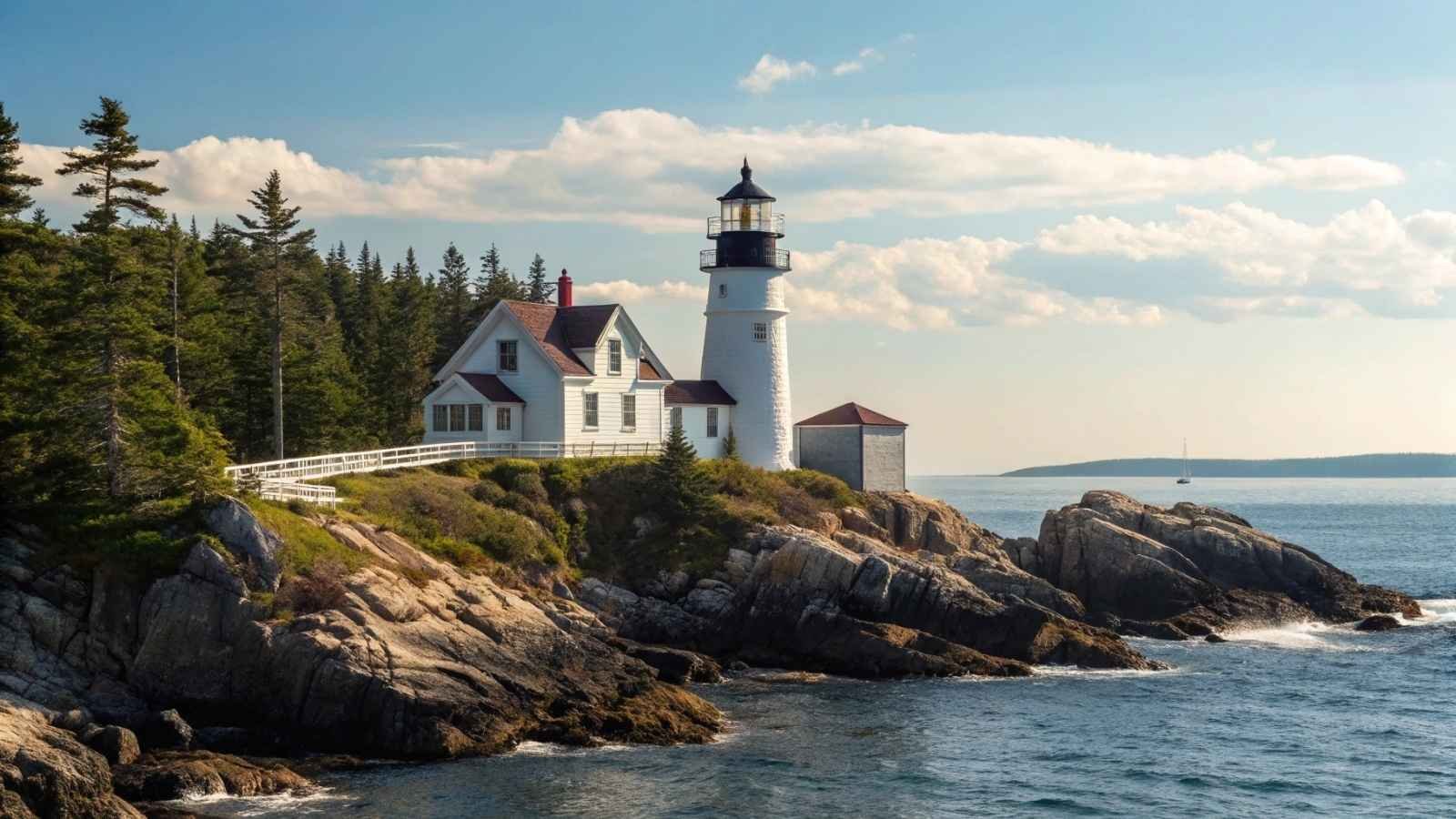
Nestled within Acadia National Park, Isle au Haut is a haven for purists seeking quiet coastal beauty. Accessible only by the mailboat ferry from Stonington, it offers no bridges, no cars welcome—just a chance to reconnect with untouched nature.
The island’s charm lies in its unhurried pace—trails winding through spruce and fir, rugged shorelines edged with tide-cut cliffs, and star-filled nights. You won’t find chain stores, just a small store and community-run amenities that blend into the landscape.
For a short but unforgettable escape, hike five miles of park trails, dip in serene coves, and stay in rustic cabins or camp under the pines. It’s the perfect antidote to busy travel—a reset in the middle of nature’s calm.
Quick Tips:
- Best months: June–September (ferry runs regularly; mild weather)
- How to get there: Mailboat ferry from Stonington (~45 min)
- Where to stay: Park cabins, private cottages, or bring your tent
- Must-do: Hike Acadia trails, sunset kayaking, remote beach strolls
- FYI: No cars allowed; bring everything—no shops beyond essentials
12. Kelleys Island, Ohio
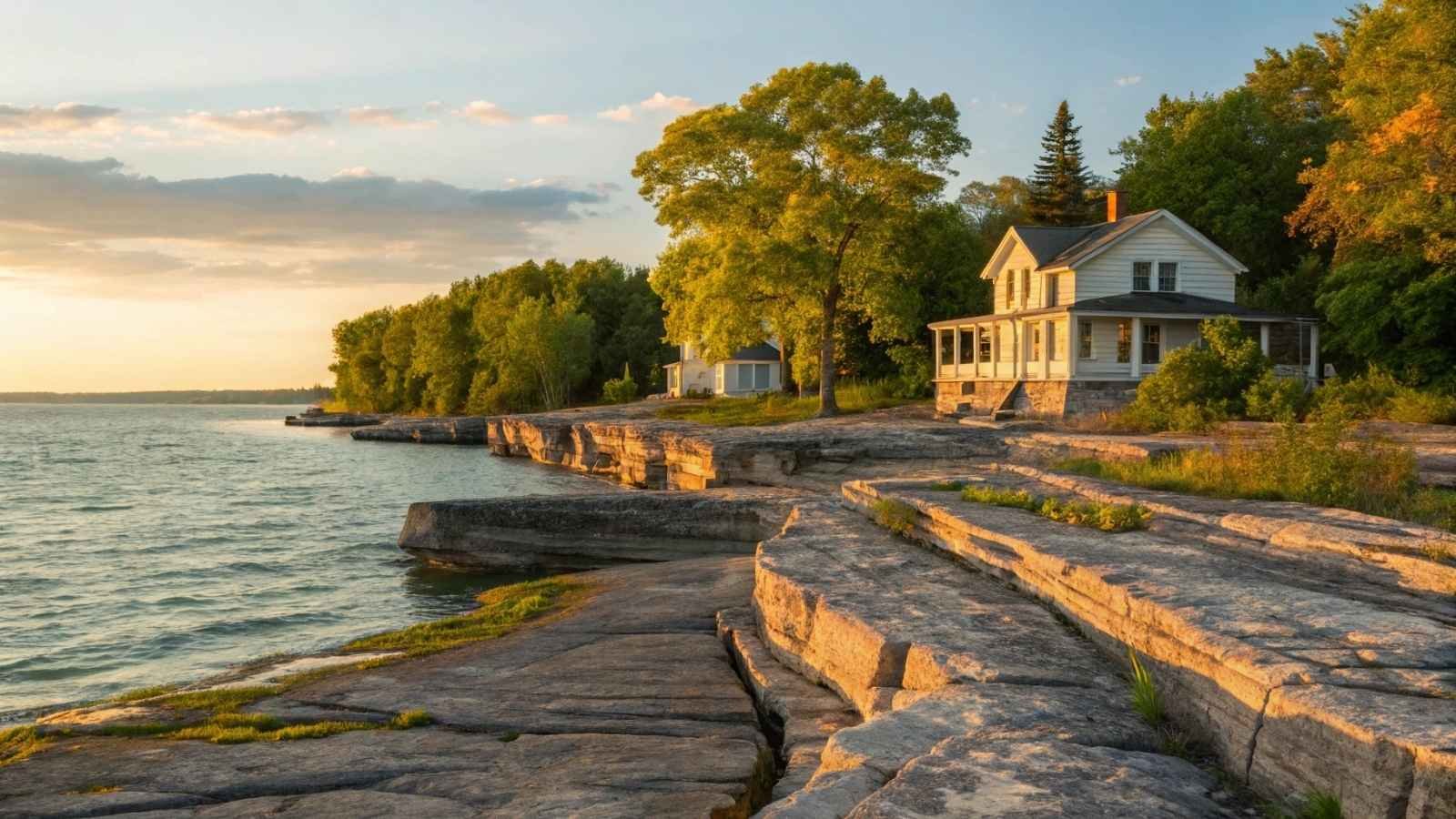
Floating in Lake Erie’s western basin, Kelleys Island is a blend of geological oddities, deep history, and serene lakeside moments. Walk through a state park carved by ancient glacial grooves, or explore abandoned lime kiln ruins next to a swaying forest.
There’s a DIY vibe here—rent a golf cart or bike to explore downtown wineries, casual eateries, and coastlines peppered with petroglyphs at Inscription Rock. Summer evenings are alive with live music and lake breezes, but the overall feel is laid‑back and welcoming.
Whether you’re chasing natural phenomena or just craving a slower pace, the island offers a refreshing midwestern twist on island life—relaxed, curious, and just enough wild.
Quick Tips:
- Best months: May–September (fairs, festivals, warm lakeside weather)
- Access: Ferry from Marblehead Peninsula (~15 min)
- Stays: B&Bs, cottages, or a lakeside campground in a state park
- Must-do: Glacial grooves, lime kiln ruins, winery tours, kayaking
- Heads‑up: Summer weekends are busy—midweek is peaceful
13. Smith Island, Maryland

A trio of tiny Chesapeake Bay villages—Ewell, Tylerton, Rhodes Point—Smith Island is Maryland’s last inhabited island, accessible only by boat. With fewer than 300 people, its charm lies in tradition, seafood, and culture on the brink.
Famous for its multi-layered “Smith Island Cake” (Maryland’s official state dessert), the community still thrives on crabbing and oyster harvesting. Kayaking through marsh channels, sampling crab cakes, and biking between villages makes for an authentic Bay escape.
The island is honest about its fragility—sea-level rise threatens its future. Visit now to savor a living piece of Chesapeake history before it’s lost to time.
Quick Tips:
- Best months: June–September (warmer, full crabbing season)
- Access: Ferry from Crisfield (~1 hr); private boat options
- Stays: B&Bs like Bayside Inn, small rentals
- Must-do: Eat Smith Island Cake, kayak the marshes, chat with locals
- Heads‑up: Bugs can be intense in summer; single ferry per day—plan ahead
14. Bear Island (Shackleford Banks), North Carolina
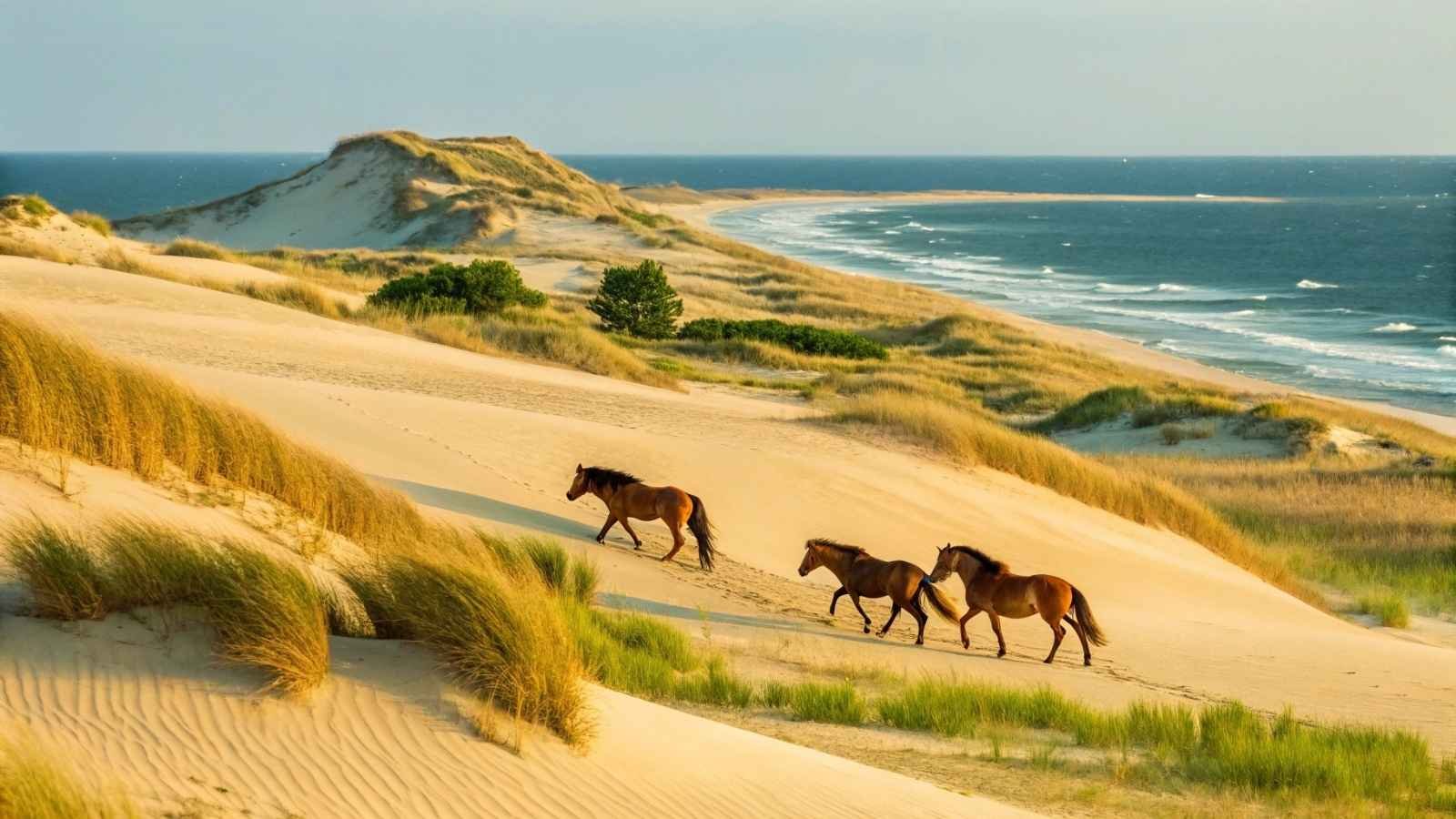
Part of the Cape Lookout National Seashore, Bear Island (also known as Shackleford Banks) is a wild barrier island home to resident wild horses and pristine beaches. Reachable only by ferry or private boat, this island offers solitude and natural spectacle.
Beaches here stretch endlessly, dunes shift with the tide, and the stars are dazzling at night. Without roads or buildings, you’re fully immersed in wild coastal rhythm. Kayak through tidal pools, watch horses roam free, and camp under untouched skies for a transformative experience.
Quick Tips:
- Best months: May–October (warm water, less rain)
- How to get there: Ferry from Beaufort or Harkers Island
- Where to stay: Primitive beach camping (permit needed)
- Must-do: Wild horse sightings, beachcombing, paddling through estuaries
- FYI: No facilities—bring all gear, and pack out everything






